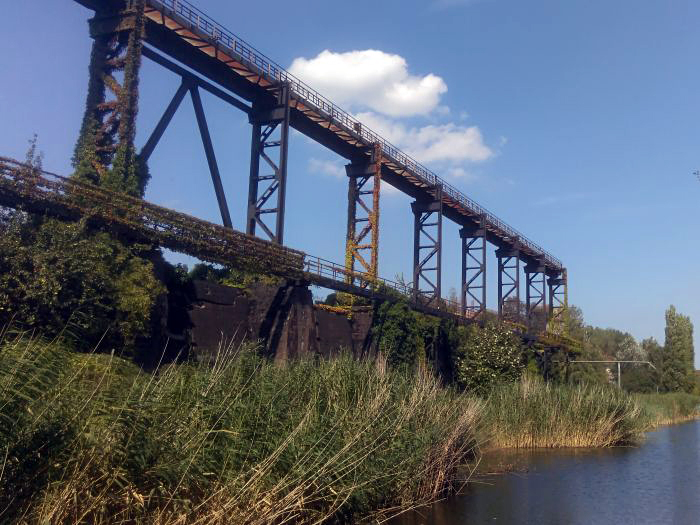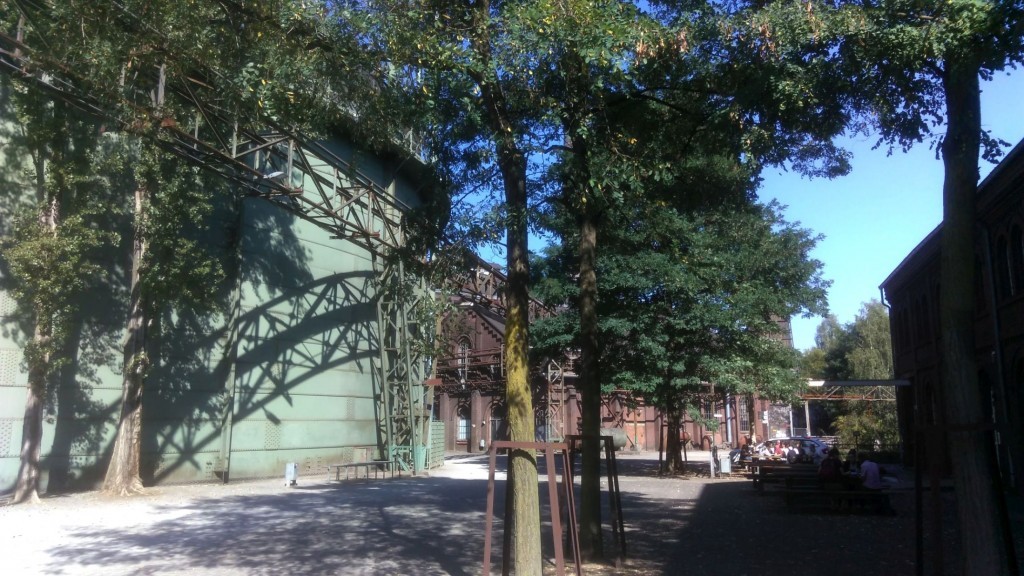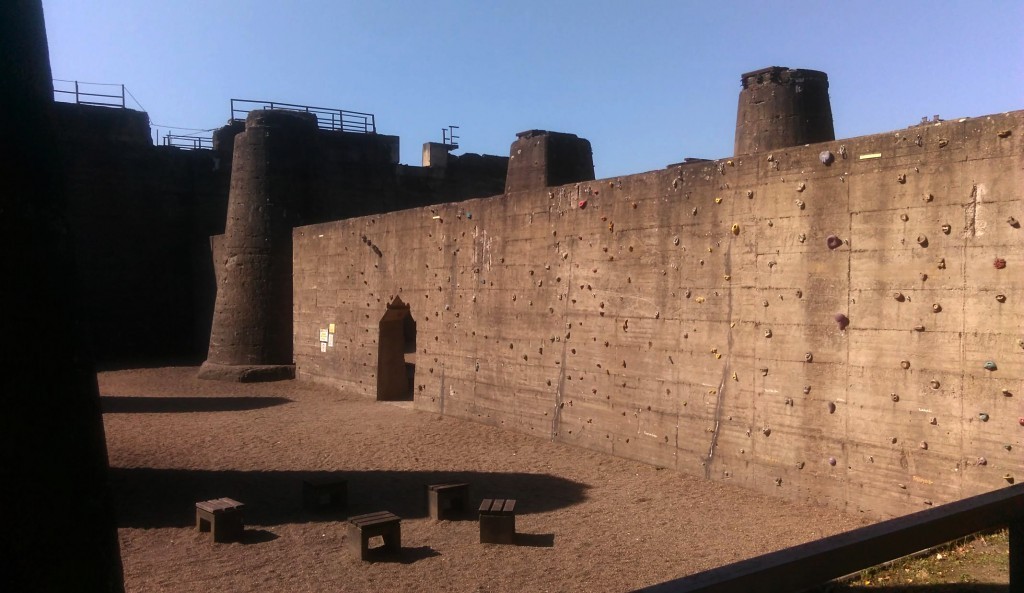Text, photo: Ștefan Ghenciulescu
Strange castles, nearly 100 meters high, with rods, slabs, enormous bellies with iron guts; huge halls; a big barrel full of water, where the wreckages of several little boats and an aircraft are floating; concrete tanks, pools with overgrown water lilies; rows of pillars suffocated by vines; a forest with floating pipes; and still, you do not feel in a detective, post‑apocalyptic or Tarkovsky movie, because there are playgrounds everywhere, and climbing contraptions.
In an area concentrated at the main entrance there are contemporary art exhibitions and installations, with a cool café and, further on, a sausage‑caravan.
Landschaftspark Duisburg‑Nord (Duisburg‑Nord landscape park) is an area of 180 hectares, a former strong industrial plant, part of the formidable Ruhr area. This region has been struggling for decades with massive de‑industrialization, trying to build a different kind of future, one with an economic and social situation which has no other national equivalent except in several parts of the former GDR. One of the main regeneration tools was to use the extraordinary industrial heritage, not only preserved, but transformed into a décor for top contemporary culture, along with ecological reconstruction and rehabilitation.
Essen Zollverein, today part of UNESCO heritage, is a famous example, but actually this is all part of the regional strategy. And it goes well, although it became clear that you cannot rely only on culture and on an inevitably elitist tourism as an engine of recovery. Economy, attracting and retaining visitors, people’s lives, these things are harder to stimulate, they need other incentives as well.
And there’s more: in fact, few locals are actually involved in this post‑industrial hype. Sometimes they even feel slightly pushed aside for cultural events, which are clearly not for them. Some still feel the nostalgia of the industrial past, but most prefer to enjoy the mall (it is the perverse nature of this pseudo‑urban object to work best in poor areas).
Well, this park manages to be comprehensive and work even as public space. It is open all the time, it’s a paradise for industrial architecture aficionados, always alive with art events and concerts. But at night it becomes a light show which is the pride of the whole region. It is child‑friendly, thousands of people are attending the shows or get lost in solitary walks on the alleys. It is nice there because one really feels that nature, actually artificial, designed nature, actually purges (thus the former waste water pools are today normal waters) and in several places, it begins to move alone outside the boundaries. Trees are not neatly trimmed, alleys are not perfect, although this is Germany. The past is honoured, but in a decent way that accepts the passage of time, the end of a respectable era and open windows to something new.
This is a great example of industrial regeneration and of dealing with a very special heritage. I love how raw and romantic it is, that it is inclusive without becoming populist, as an amusement park. And I also like that it is a project that accepts the thing that we architects find so hard to admit, that things, even the most beautiful ones, fade away, and that there can be a balance between preservation and slow and dignified disappearance.




